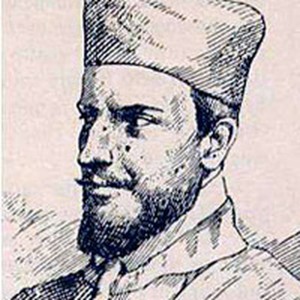The Sonatas from Francesco Cavalli’s Musiche Sacre
 The instrumental music on Magnificat’s Berkeley Festival program is drawn from Musiche sacre (Venice, 1656) by Monteverdi’s colleague at San Marco, Pier Francesco Cavalli. A musician of the highest caliber, Cavalli’s virtuosity as an organist was compared to Frescobaldi and in 1655 Giovanni Ziotti wrote that ‘truly in Italy he has no equal’ as a singer, organist and composer. Giovanni Battista Volpe, another organist at San Marco, praised Cavalli’s ability to “set his texts to noble music, to sing them incomparably and to accompany them with delicate precision.”
The instrumental music on Magnificat’s Berkeley Festival program is drawn from Musiche sacre (Venice, 1656) by Monteverdi’s colleague at San Marco, Pier Francesco Cavalli. A musician of the highest caliber, Cavalli’s virtuosity as an organist was compared to Frescobaldi and in 1655 Giovanni Ziotti wrote that ‘truly in Italy he has no equal’ as a singer, organist and composer. Giovanni Battista Volpe, another organist at San Marco, praised Cavalli’s ability to “set his texts to noble music, to sing them incomparably and to accompany them with delicate precision.”
A talented boy soprano, Cavalli was engaged at San Marco in 1616 at the age of 14 and remained in the service of the Basilica for the remainder of his life, first as a singer, then organist and finally as maestro di capella. During the 1620s was also organist at SS. Giovanni e Paolo and free-lanced regularly at other churches in Venice, at the Scuola Grande de San Rocco and at salons in the private homes of numerous wealthy Venetian patrons. Despite his growing reputation as a singer and composer, the youthful Cavalli led a reckless lifestyle, racking up considerable gambling debts that were generously paid by admiring patrons.
His marriage to an affluent widow in 1630 transformed Cavalli into a wealthy landowner and later allowed him to become one of the first investors in public opera, the arena in which his most enduring fame was to be established. Involved not only as a composer but as an impresario, Cavalli was the dominant figure in the first generation of Venetian opera and during the 1640s and 50s he composed over 20 operas, many of which were performed in outside of Venice as well. In 1659 he was honored with a commission from Cardinal Mazarin to compose an opera for the occasion of the marriage of Louis XIV to Maria Theresa, the Infanta of Spain.
Throughout this period Cavalli retained his position as organist at San Marco and upon the death of Rovetta in 1667 he was unanimously chosen to succeed him as maestro di capella. Following in the tradition of retrospective collections, Cavalli prepared his Musiche sacre for publication in 1656. Musiche sacrecontains 28 works – eleven psalms, five hymns, a Magnificat, four Marian antiphons, an elaborate concertato Mass setting (which Magnificat will perform on the San Francisco Early Music concert series in December 2014) and six instrumental sonatas, five of which will serve as ‘antiphon substitutes’ on Magnificat’s program.
The smaller sonatas – those in 3, 4 and 6 parts – are more contrapuntal than the larger works, in which the instruments are divided into two choirs and the texture is more consistently homophonic. While the overall style of the sonatas is conservative, often reminiscent of Gabrieli’s canzoni, there are nevertheless features drawn directly from Cavalli’s operatic style, e.g. the extended descending tetrachord ostinato section at the end of the Canzona a 3.